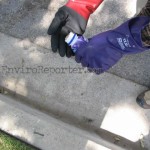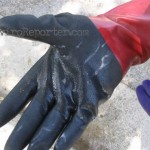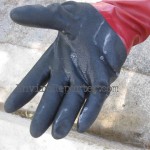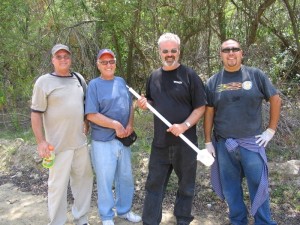Recent articles in the Ventura County Star and the Simi Valley Acorn, and comments by City of Simi Valley officials, have misrepresented the pollution problems in Runkle Canyon and our role in reporting them. In order to correct the record, and to continue to provide the citizens of the Simi and San Fernando valleys the best news coverage regarding Runkle Canyon, EnviroReporter.com has provided following analysis of the actual pollution findings, erroneous media coverage and comments by Simi Valley officials.
The Pat-Chem Laboratories Runkle Canyon report
The Pat-Chem test did not cost $3,000, or $4,000, as “reported” by the Simi Valley Acorn and the Ventura County Star. The “Radiation Rangers” article, published in Los Angeles CityBeat/ValleyBeat June 21, 2007, stated that the services were worth nearly $3,000. Pat-Chem generously provided testing that was above and beyond what the citizens paid for because there was a mix-up in the amount of testing ordered and the pricing of that testing, which Pat-Chem graciously covered.
Michael Collins ordered the testing and was the recipient of the report at the citizens’ request, as he has extensive knowledge of the various substances that were tested for and their toxicity. The Reverend John Southwick subsequently received the testing results from Collins. The Radiation Rangers had full knowledge of these tests from the moment Collins received them and Southwick has had a copy of the tests prior to its full release July 6, 2007.
Collins posted only the two pertinent pages of the testing report which indicated high levels of arsenic, nickel and vanadium. (It is important to note that these tests did not sample or test for radionuclides such as leukemia-causing Strontium-90 that have been found elsewhere in Runkle Canyon.)
As Southwick told the Acorn in a July 6, 2007 article, the residents wanted to hold back some of the test’s results “to get the city to go out and do its own testing. We knew that if we didn’t divulge the other pages, if we only gave them two pages of the original testing, we knew that would make them want to test. And that’s exactly what they’ve done.”
Linked here is the full Pat-Chem test results, results that led Collins to report in Los Angeles CityBeat/ValleyBeat that:
Runkle Canyon’s surface water readings for arsenic are 15 times the MCL for drinking water, over 21,000 times the EPA’s “preliminary remediation goal” and 37,500 times the agency’s “public health goal” for potable water.
The mud sample was laced with arsenic as well, coming in at over 548 times the EPA’s preliminary remediation goal for the contaminant in soil. That amount of the toxin is also 213 percent of the Department of Toxic Substances Control (DTSC) arsenic “field action level,” where further investigation is warranted.
“The Radiation Rangers” cover story also reported a number of other facts that seem to have been forgotten in the blizzard of hooey surrounding our coverage of the Pat-Chem report and the “melting” gloves. Those facts include analyzing suspect California Department of Health Services (CDHS) answers to the questions posed by the Radiation Rangers:
CDHS states twice in its answers to citizens that there is only one sample known of elevated Sr-90 ever found on the Brandeis-Bardin property. Actually, there are 25 Brandeis-Bardin soil samples with elevated Sr-90 according to a Rocketdyne-funded study, the 535-page 1995 McLaren/Hart report, “Additional Soil and Water Sampling – The Brandeis-Bardin Institute and Santa Monica Mountains Conservancy.” The report also noted two hot water samples with Sr-90 on the Jewish camp property.
Additionally, CDHS stated in their responses that in a November 8, 2006 CDHS analysis that the chance of dying from Runkle Canyon Sr-90 was 0.00045 in a million. That analysis seems flawed: DHS took the “risk-based” number of possible deaths, about 5 per million, converted it into a “dose-based” number and then back again to a risk-based result to come up with 0.00045 out of a million. This scientific slight of hand ends up with a result 10,774 times lower than what the department said the figure was to begin with.
Recent Ventura County Star and Simi Valley Acorn coverage
Ventura County Star:
Simi Valley Acorn:
Mayor and City Council statements
The Gloves

As was reported by Collins in CityBeat’s “The Radiation Rangers,” we don’t know what caused the water to bubble on Matheney’s gloves. But we do know what it looked like as the photos below attest. We understand why we wrote this in the article: “I don’t think we’ve seen numbers that high but we’re not qualified to say if it’s natural or unnatural,” said one Pet-Chem employee who asked to remain anonymous. “That’s the hardest goddamn water in your life. It’s a little bizarre. I would hope not too many people would touch that water.”
As Southwick jokes, “Your gloves didn’t bubble, but you’ve still got trouble.” The Radiation Rangers’ full Pat-Chem report on Runkle Canyon hazardous metals seems to bear that out as does repeatedly high radiation readings in and around Runkle Canyon.


EnviroReporter.com
Michael Collins is a multi-awarding-winning investigative journalist who specializes in environmental issues. Since January 2004, Collins has been a Director of the Los Angeles Press Club and the Chair of its Judging Subcommittee. On June 16, 2007, Collins was awarded Journalist of the Year – Print Under 100,000 Circulation honors at the 49th Southern California Journalism Awards for his work for Los Angeles CityBeat & ValleyBeat newspapers. Part of the work submitted to this awards competition included reporting on Runkle Canyon.
EnviroReporter.com also won First Place at the same awards competition for Online News, Story, Feature, Series or Package and Second Place for Designer of the Year – Print or Online, as well as Second Place for Online Design and Layout.
Los Angeles CityBeat/ValleyBeat broke this story March 10, 2005 with the cover story “Neighborhood Threat – Runkle Canyon is poised to be Simi Valley’s newest neighborhood. But did the city misinterpret the risk of radioactive material in the ground?” We have written a number of follow-up articles that can be found at our Runkle Canyon Investigation page.
24 Years of Award-Winning SSFL/Rocketdyne Reporting
June 1998 – June 2022













Recent Comments